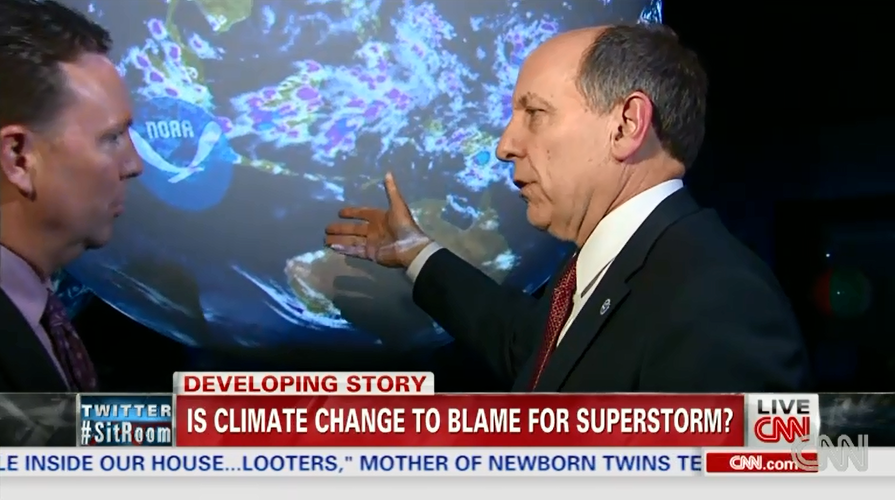News Around NOAA
National Program

Super Typhoon Haiyan, one of the strongest tropical cyclones in recorded history, devastated the Philippines in early November, leaving a path of death and destruction that will not soon be forgotten by island nation or the world.
In light of the power of the storm, many have been asking the question of whether there’s a link between the intensity of Haiyan and climate change. It’s a question that NWS Director Louis Uccellini responded to during a recent interview with CNN.
“There is some evidence that, although there is not necessarily an increasing number of storms — and, again, there’s mixed results there — that we’re seeing more intense storms,” Uccellini said.
Uccellini said that there’s an increased vulnerability among coastal populations as climate change drives an increase in sea levels.
“The fact that the sea levels are rising,” he pointed out, “means that as you get these types of storm systems, you will be driving more water towards land.”
According to CNN, Super Typhoon Haiyan resulted in more than 3,600 deaths and 12,000 injuries.
The full video of CNN’s video featuring Uccellini is available at: https://cnn.it/17XMHHC
US Dept of Commerce
National Oceanic and Atmospheric Administration
National Weather Service
News Around NOAA
1325 East West Highway
Silver Spring, MD 20910
Comments? Questions? Please Contact Us.

